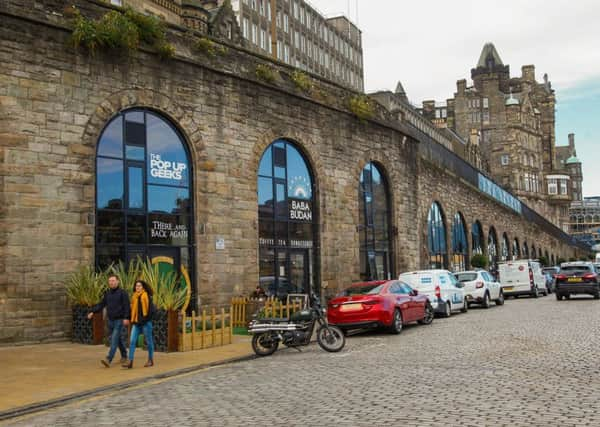Commercial property: Retailers must be open to experience


Looking at Edinburgh’s city centre, House of Fraser closed its doors at the start of November after more than 60 years. But, at the other end of Princes Street, the city’s largest ever retail-led offering, Edinburgh St James, is emerging. So what exactly is happening to retail?
A report published this month by the Scottish Retail Consortium and retail analysts Springboard showed a third consecutive month of declining footfall. Retail is witnessing a perfect storm of shoppers moving online, rising wage costs and higher business rates.
Advertisement
Hide AdAdvertisement
Hide AdFrom an investment perspective, it is not hard to see why the flow of capital has stalled, as investors heed the warnings of high-profile store closures and declining high-street footfalls.
Technology has improved price transparency for consumers, increasing market efficiency and reducing profits for retailers.
But the bad news is not just for the high street. According to JLL’s UK figures, shopping centre investment activity in 2017 was the lowest on record at £2.1 billion. The first half of 2018 saw transactions of £558 million, the lowest H1 trading volume since our records began 20 years ago.
However, retailers that innovate by using physical shops to showroom their brands, while focusing on building the efficiencies of their online platforms, are increasingly winning.
And online sellers are now seeing the value of using the high street and retail parks where suitable – think about Amazon’s plans for cashierless supermarkets.
For the shopping centre, the future is about creating consumer experiences. Consider the role of eating out, for example.
Reportedly, half of Millennials would rather go to a food festival than a music festival and 78 per cent would choose to spend money on an experience over buying an object, causing landlords to consider the importance of food and beverage outlets in the new experience economy.
That’s why developments such as Edinburgh St James and New Waverley are well placed to succeed. They will meet the modern consumer demand to live, shop, eat and play in one place.
Advertisement
Hide AdAdvertisement
Hide AdExperience and active asset management initiatives are now critical to delivering performance in a competitive retail landscape.
This will begin to have a marked impact on asset pricing, with prime global investors paying for innovation and outperformance.
The retail market is one of the most dynamic in the world and is the biggest employer in the UK; it is also one of the most adaptive to change.
But landlords and tenants must act quickly to stem the tide of store closures and declining footfalls.
Alasdair Humphery is Lead Director at JLL in Scotland